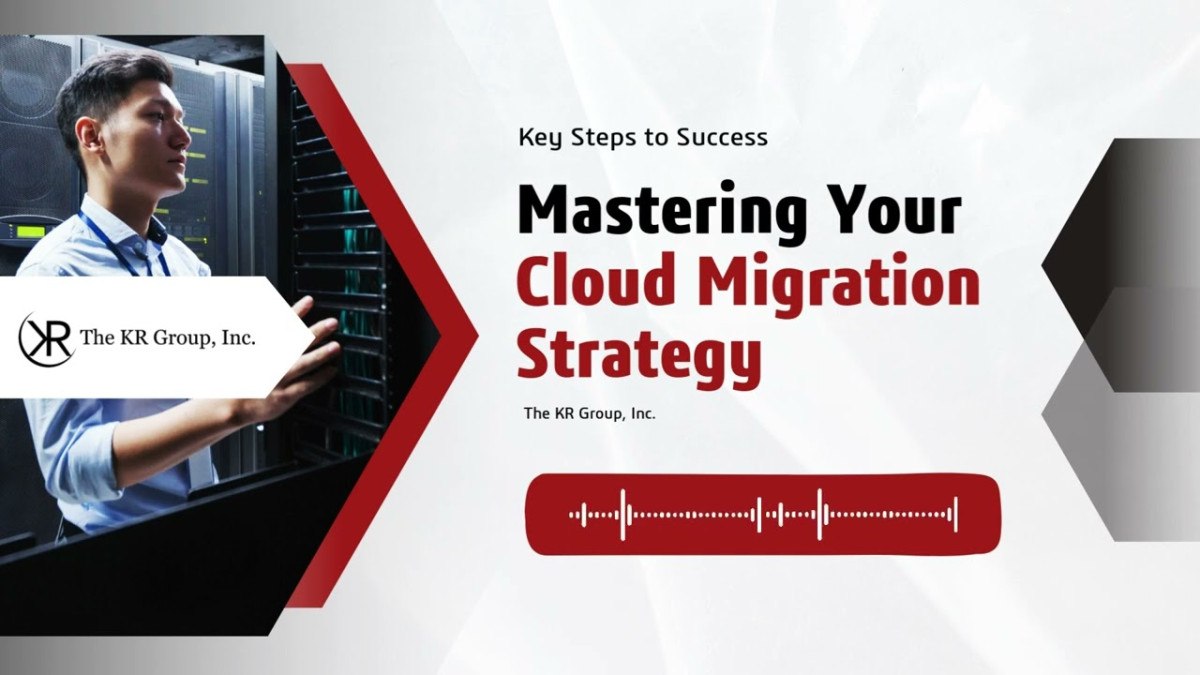Mastering Cloud Migration with Expert IT Support Services in Grand Rapids
The shift to the cloud has become a strategic necessity for businesses looking to stay competitive in a fast-evolving digital landscape. Companies of all sizes are embracing cloud computing for its scalability, flexibility, and cost efficiency. However, the journey to the cloud isn’t without its challenges. According to a report, one-third of cloud migrations fail outright, and only 1 in 4 organizations meet their migration deadlines.
As the leading IT support provider in Grand Rapids, The KR Group frequently receives questions about effective cloud migration strategies.
Why a Cloud Migration Strategy Is Key — and How Grand Rapids IT Support Services Can Help
The Risks of Unplanned Migration
Without a clear plan, migrating to the cloud can create more problems than solutions. Common issues include:
- Skyrocketing Costs: Unmonitored resource usage often leads to excessive spending, with up to 30% of cloud costs going to waste. Even 20% of organizations are concerned about the initial cost of implementing a cloud-based server.
- Service Interruptions: A poorly planned migration may lead to unexpected downtime, affecting customer satisfaction and revenue.
- Data Security Threats: Moving sensitive data without robust protocols can leave your organization vulnerable to cyberattacks.
Such outcomes are avoidable with a structured approach that addresses these risks proactively.
The Benefits of Strategic Planning
A well-executed cloud migration strategy offers:
- Optimized Costs: Efficient resource allocation minimizes waste.
- Improved Scalability: Seamlessly handle fluctuating workloads as your business grows.
- Enhanced Security: Protect sensitive data with advanced encryption and compliance measures.
- Faster Innovation: Cloud environments support rapid deployment of applications and services.
Building Your Cloud Migration Strategy
Step 1: Assess Your Current IT Landscape
Begin your migration journey by thoroughly analyzing your existing systems.
- Audit Your Applications: Identify which applications are critical, redundant, or outdated.
- Map Dependencies: Understand how systems interact to avoid disruptions during migration.
- Evaluate Performance Metrics: Establish benchmarks to measure post-migration success.
For example, an organization with legacy applications may need to update or replace certain systems before migrating.
Step 2: Define Clear Objectives
Ask yourself: Why are you moving to the cloud? Establish measurable goals that align with your business strategy, such as:
- Reducing IT Costs: Save on hardware, maintenance, and energy expenses.
- Enhancing Business Agility: Enable faster time-to-market for new products.
- Strengthening Data Recovery: Improve backup and disaster recovery processes.
Each goal should include KPIs, such as cutting IT spending by 25% within the first year of migration.
Step 3: Choose the Right Cloud Model
The cloud model you select depends on your specific needs:
- Public Cloud: Ideal for startups and SMBs, offering cost-effective scalability.
- Private Cloud: Provides enhanced control and security for industries like healthcare and finance.
- Hybrid Cloud: Combines the advantages of public and private clouds, allowing businesses to maintain sensitive data on-premises while using cloud services for less critical workloads.
Take advantage of vendor-provided tools like AWS Well-Architected or Azure Migrate for tailored recommendations.
Step 4: Select Your Migration Approach
Different workloads require different migration methods:
- Rehosting (Lift-and-Shift): Move applications as-is, a quick solution for low-complexity workloads.
- Replatforming: Make minor adjustments to applications for better cloud performance.
- Refactoring: Redesign applications to fully leverage cloud-native features like serverless computing.
- Hybrid Migration: Combine approaches based on workload priority and complexity.
A clear understanding of each approach helps balance short-term costs with long-term benefits.
Addressing Common Migration Challenges
Managing Costs
Cloud sprawl—unmonitored resource usage—can quickly inflate costs. To control expenses:
- Use cost calculators offered by cloud providers.
- Regularly monitor resource usage through dashboards.
- Establish automated policies to shut down idle resources.
Ensuring Security
Migration increases the risk of data breaches, but proactive measures can mitigate this:
- End-to-End Encryption: Protect data during transit and storage.
- Role-Based Access Control (RBAC): Limit access to sensitive information.
- Regular Audits: Continuously monitor compliance with regulations like GDPR or HIPAA.
Executing the Migration
Step 1: Pilot Testing
Run a small-scale migration to validate your strategy and identify potential issues.
- Test applications with low risk but measurable impact.
- Monitor performance metrics and make adjustments as necessary.
Step 2: Phased Migration
Move workloads incrementally to minimize disruptions.
- Prioritize critical applications for the initial phases.
- Address lessons learned during the pilot phase.
Step 3: Post-Migration Optimization
Once the migration is complete, focus on continuous improvement:
- Monitor KPIs regularly to measure success.
- Optimize cloud configurations for better cost efficiency and performance.
- Solicit user feedback to identify areas of improvement.
Wrapping Up: Your Path to a Successful Cloud Migration
According to a report by CloudSecureTech, An average financial services company uses more than 1,000 cloud services. A carefully planned cloud migration strategy is the cornerstone of a successful digital transformation. By assessing your current infrastructure, setting clear goals, and addressing common challenges, you can unlock the full potential of cloud computing.
The KR Group, a trusted Grand Rapids IT support provider, specializes in helping businesses design and execute tailored cloud migration strategies that align with their goals. Contact us today to schedule a consultation and embark on your journey to the cloud with confidence.





